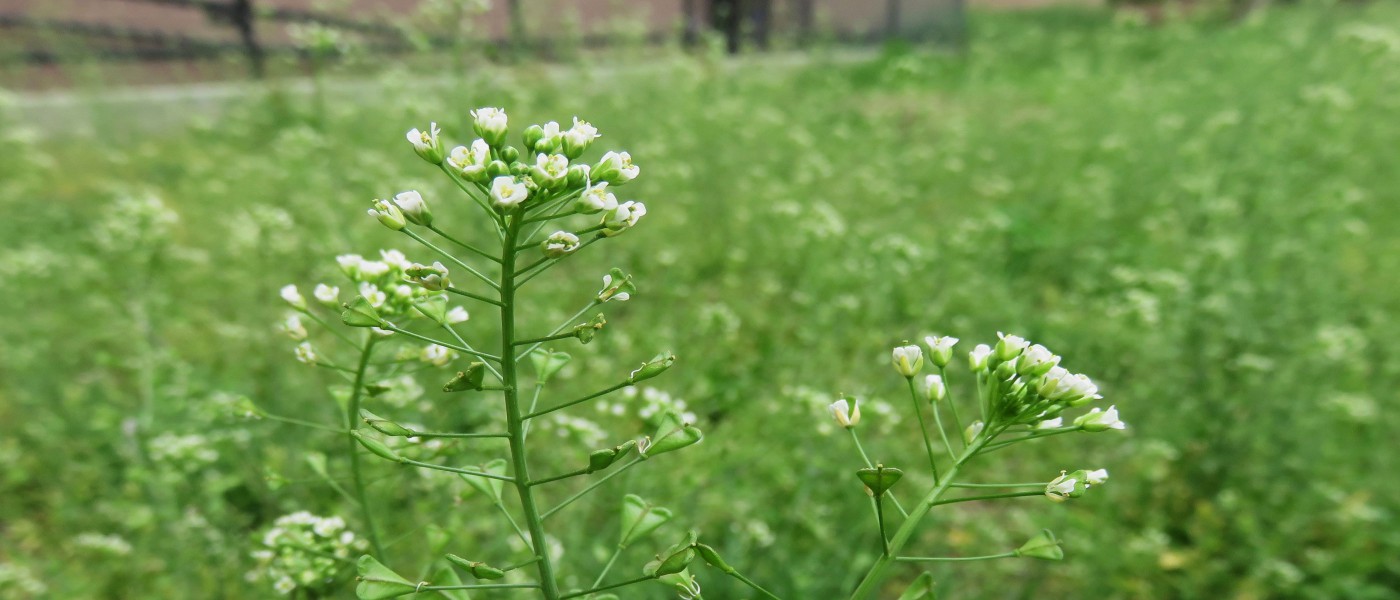Weed of the Month: Shepherd’s Purse
Vacant lots, fields, and tree beds around Brooklyn are filled with shepherd’s purse (Capsella bursa-pastoris) right now. This prolific springtime weed has petite white flowers, and it's common name refers to the nearly heart-shaped seedpods that form on its long stalks. They resemble the little leather pouches carried (at one time) by shepherds in Europe and Asia Minor, from whence the plant originated.
Shepherd's purse spread across the globe with European colonization and is now one of the most common weeds in the world. In my own travels, I have seen it growing across the U.S., as well as in France, Iran, Turkey, and Canada!
Like other members of the mustard family, shepherd’s purse reproduces via abundant, long-viable seeds that burst out of the pods, and many generations can be produced within a single year. The leaves grow in a rosette and are edible in the early spring, much like dandelion or chicory greens. The seedpods add a peppery punch to stir fries and salads—they're also a common ingredient in traditional Chinese cuisine. Historically, the vitamin K–rich plant was used for all manner of internal and external blood regulation. It’s been used to treat everything from nosebleeds to hemorrhages to menstrual problems. German soldiers during World War II relied on shepherd’s purse extract to treat wounds in the field when other medicines were scarce.
As I was poking around my weed reference books, reading up on the usual statistics like plant distribution and reproduction, I learned for the first time about an unusual adaptation exhibited by shepherd’s purse: myxospermy. When moistened in the soil, its seed exudes a sweet, mucilaginous substance that entraps and then digests small insects and microorganisms. As the seed germinates, the nutrients from the insects feed the seedling, making shepherd’s purse a “protocarnivorous” plant.
This is surprising. Most true carnivorous plants, like Venus flytraps and pitcher plants, live in nutrient-poor bogs and evolved to ingest insects to supplement their nutrient intake. But shepherd’s purse grows in fields, gardens, vacant lots—all the usual environments where weeds thrive. Scientists are puzzling over why this would be—does this adaptation hint at a long-ago trauma in the plant’s evolutionary history? Perhaps one day the mystery will be solved, but in the meantime, I’ll never look at shepherd’s purse in the tree pit in front of my building the same way.


